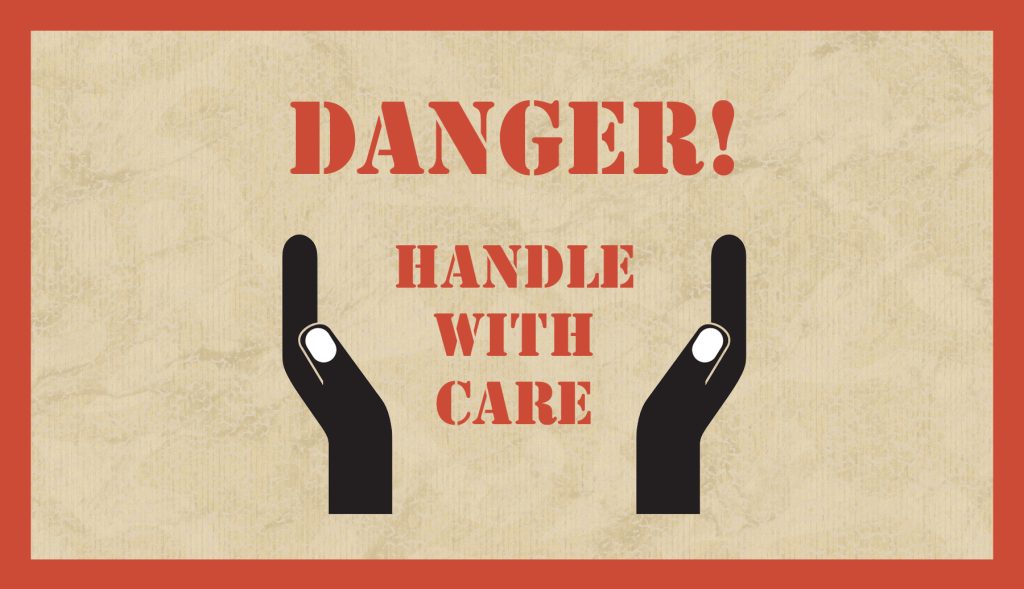UPDATED JULY 15, 2024
Everybody’s talking about pain points
I keep seeing marketers advising the use of pain points as the best — and sometimes the only — way to sell.
“Find the pain!”
“Push on the pain!”
“Hammer the pain!”
But, while pain points can be persuasive in copywriting, they’re also easy to get wrong.
The dangers of marketing “advice”
If you’re not from a marketing background, it can be a bad idea to take ‘‘advice” from professional marketers. Because “advice” that might seem helpful and achievable is often incredibly vague and requires a much deeper understanding to make it work effectively.
Taking “advice” when you don’t have the experience to apply it properly is like taking hold of a weapon. And you’ll inevitably use it to kill your copy — along with any chance of making sales.

Pain points can be powerful. But as with any kind of power, you have to know when to use it. And when you do, you need to wield it skilfully.
How businesses get pain points wrong
There are a number of mistakes businesses make when they attempt pain point copywriting. Here are three of the most common mistakes I see.
The pain point overbalance
The business goes in heavy writing about all the pain points, then follows up with a comparatively insubstantial amount of pain relief. And it’s not enough.
The pain point presumption
The business presumes to understand their prospects’ pain points, but gets them wrong. Their prospects don’t identify with the pain points described and think the business doesn’t understand them at all.
The imperfect pain scenario
The business has created what they think is the perfect pain scenario. But they’ve lost sight of what their visitors actually need, so the copy doesn’t follow through with a compelling solution.
How are pain points meant to work in sales?
Talking about our audience’s pain points creates an emotional response. It shows them we understand their challenges, needs and concerns — and that we’re genuinely interested in helping them. Plus, introducing their problem helps us present our solution in a more compelling way.
Some marketers say that as we describe each pain point scenario, we’re supposed to imagine our readers nodding along, thinking ‘OMG, yes, that’s me!’ And consequently, ‘You must really get me, so I simply must buy what you’re selling!’
But is that what’s really happening?
Because, as a consumer and someone who talks to consumers, I’m not so sure it is.
Why pain points should be used with care

Pain isn’t always the most powerful persuader
I saw a post on LinkedIn a few weeks ago and it resonated harder than anything I’d read in a long time. So much so, it inspired me to write this blog article.
Kudos to Matt Saunders, who wrote it and kindly gave me permission to include it here.
In marketing we’re taught to “speak to the client’s pain points”
But what if we’ve been looking at this wrong?
Over the past 12 months I have noticed something about my clients: the ones who are in pain are the least likely to invest in working with me.
Because all they can see is their pain.
So ideally we need to be looking for *inspiration*
That is to say, for me and my business, focusing on where the client wants to GO (rather than where they ARE) is the base of my messaging.
So it’s not so much “sick of crappy clients?”
It’s more “find amazing clients!”
There’s a space for focusing on the pain, but consider giving primary space to your goal-based, aspirational messaging.
This, to me, calls in the clients who are really ready to invest.
Thoughts?
Matt’s business is helping freelancers to get more clients. You can find out more about him and his work by visiting his website.
I found Matt’s take on pain points refreshing. And he’s right that pain points aren’t a one-size solution for every sales effort.
Pain points aren’t always helpful
When a prospect reads your copy, the likelihood is that they already know they have a problem. They may be intimately acquainted with their problem having already researched it online.
What they’re looking for is a solution. The thing that will make their problem go away.
What they’re not looking for is half a page devoted to telling them about the problem they have in excruciating detail. Because that feels like you’re putting a mirror in front of them rather than the solution they came for.
Pain is subjective
While there may be commonalities, pain is fundamentally subjective. Everyone experiences it and reacts to it differently because everyone has different sensitivities and tolerances. And that’s before you’ve factored in the context and perception of the pain.
The other thing to remember is that not everyone who needs what you’re selling will be experiencing pain. In those cases there will be different triggers that will push them to buy.
With website copy, in particular, you have such a limited window. Blogging is often a much better way to talk about pain as it allows you to target specific pain points and specific people.
Pain points can be negative
There’s a fine line between copy that’s empathic and copy that’s manipulative. Between copy that makes your readers feel understood, inspired and empowered; and copy that makes them feel ashamed, guilty or fearful.
Manipulative techniques prey on readers’ negative emotions, which often feels unethical and wrong.
Pain points can waste words
In any piece of copy you only have a limited time to capture your audience’s attention. You’re never going to draw them in if you spend too much of that time reiterating to them what they already know.
It’s often a better use of words to tell them what they don’t know — and get them excited about what could be.
Pain points are easy to get wrong
When you’re pitching your pain scenarios, it’s easy to get them wrong.
If you’re too specific, you can end up with copy that only applies to a small section of your audience.
If you haven’t done your research thoroughly, you might preempt a pain point that doesn’t mirror the general experience — and causes your audience to question whether you really know them.
If you don’t look at the big picture, you might miss out prospects you hadn’t even considered — and alienate them by excluding them.
And you might assume that pain is the main factor for driving sales when it’s actually something else.
Leave your pain points to a professional
A professional copywriter will be respectful of your audience. They’ll know when it’s appropriate to talk about pain points and will do so with care and sensitivity.
But what if you’re not in a position to hire a professional copywriter?
Can you still show you understand your audience without highlighting their pain points?
Yes, of course. There are lots of positive things you can focus on instead.
Here are a few ideas to inspire you.
Focus on the relief
Pain points are ultimately an introduction to pain relief. And if you know what your prospects’ pain points are, you will also know what relieves them. So you could skip talking about how the pain feels and focus on how the relief will feel instead.
Make your copy feel blissful. Like the relief you feel when a job you find difficult becomes easy and effortless. Or the feeling of freedom you get when a problem is solved and the weight is off your shoulders.

Focus on the improvement
Show your prospects the difference what you’re offering will make and how it will transform their lives.
With our high-quality lenses, everything will become clear. Choose from a range of frames that are on-trend and so lightweight you’ll hardly even notice you’re wearing them.

Focus on the benefits
Benefits are still powerful persuaders.
When you write about the benefits of what you offer, you’re still showing you understand your audience and what matters most to them.
Imagine this:
Instead of reading your copy and seeing the ugliness of their pain reflected back at them, your prospects read one thing after another that delight and surprise them. Like the written equivalent of music to their ears.

Focus on the future
Maybe your prospects have goals and aspirations that motivate them.
So show them how their future might look if they take action now.

Focus on the control
For some people, having control is a powerful motivator. If what you’re offering restores lost control or gives greater/better control then those people will want to know about it.
Talk about how what you’re offering will put them in the driving seat and allow them to control their life/business in their own way.

Do you need web copy that goes from pain points to positive?
I’m Jenny Lucas, a freelance copywriter and content writer based in Leicester, UK.
If you need a copywriter for your project, I’ll handle your pain points ethically and sensitively. And I’ll get the balance right, with persuasive, positive copy that touches on the pain, where necessary, but doesn’t dwell on it.
If that sounds like what you’re looking for, it’s easy to get in touch and I’d love to hear from you.

You might also like…



